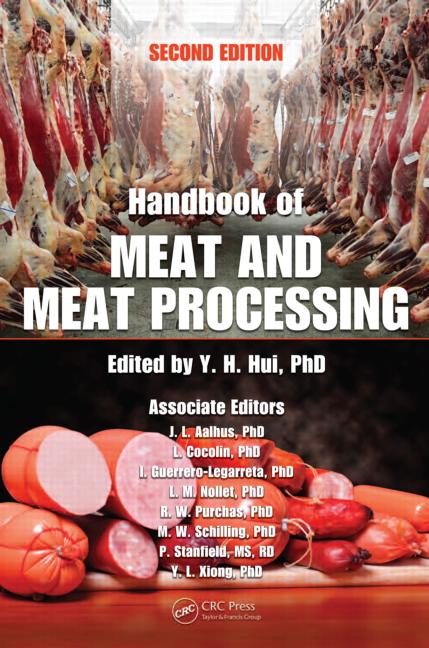Protein-processing concerns, today and tomorrow

At the Pack Expo 2011 show in Las Vegas, The National Provisioner sat down with PMMI’s Vision 2020 Focus Group, which brought together representatives of several meat- and poultry-processing companies to discuss the state of the industry from their unique perspectives.
Processors believe that three things loom very large for the industry moving forward — and those three things are also the issues that keep them awake at night currently.
Food Safety
Processors know they have to be on top of the latest technologies and research that’s going to help them in the fight for safe food. They also realize that food security has become a necessary expectation of customers, to the point that it’s a given and built into their products. Said one processor, it’s a very simple concept to understand: “When you turn the key on your car, you expect it to start. Today, people expect their food to be safe.”
Another processor stated that mislabeling and allergen issues were a concern that kept him awake at night.
“The fact that it’s so easy for someone to grab the wrong roll of labels and simply slap it on a product, and then for that product to reach distribution — which takes you to an instant allergen recall — is a scary proposition,” he said. “With technology moving as fast as it is, and even some of the things we see at these shows, there’s got to be a way to link all of that together and prevent that from happening.”
Another processor agreed that this concern will only grow as consumers’ demands grow. “We’re adding a lot more ingredients now,” he added. “We’re closer to the end users’ palates, so we’re adding it, whether it’s soy or milk or other ingredients, to get the flavor and the ability for the consumer to get that product in a ready-to-cook situation when they bring it home.”
The group referred to the need for balance and knowing what you’re getting into when it comes to the automation of your process. Said one processor: “It just gets to that age-old question: You rely on those long-term employees, but are they the right employees to rely on? Do you try to outsource and rely on technology?”
Other processors agreed, with one stating that the decision of what processes to automate and what processes to leave manual was different for every company. Put simply by the processor, “You can have a bad employee that can do an awful lot of damage, and you can also have a bad technology that does an awful lot of damage.”
Sustainability
When “sustainability” first became a big buzzword, one processor said, her company’s procurement, engineering and environmental departments got together and decided what it meant to us.
“We realized we’d just never tagged it as sustainability, but it was what we did every day to control costs and try to operate as efficiently as possible,” she explained. The other members of the group shared similar experiences around their companies’ reactions to the “green” movement. With corn prices and corn supply growing as issues for the industry, sustainability measures are solid paths down which processors believe they can save on the cost of doing business.
“We’ve seen more importance placed on recycling packaging after use, and thus finding something that we can pack a fresh poultry product in that will hold up and then be able to be recycled,” one poultry processor added. “That’s the main thing we hear from our customers is that they want that package to be recyclable when they’re done with it. They don’t want it going into their compactors and waste streams, and we understand that.”
Economy
The industry has seen unprecedented shifts in confidence and prices, and one processor admitted that his company has felt those swings as well.
“We don’t know what next month is going to bring,” he explained. “We might say, ‘Wow, we had a great month,’ but that’s no indicator of where you’re going or what you’re going to produce going forward.”
Other processors discussed the challenge of dealing with market prices that do not move in concert with each other, but often opposed to each other — thus disallowing them to pass price increases on commodities on to their customers and consumers. However, explained one processor, a day of reckoning on consumer pricing may lurk in the weeds.
“We’re currently paying 46 percent more than we did last year for livestock,” he explained. “We’re getting about 27 percent more from our customers, and they have only lifted their prices 17 percent. So at some point there’s going to be an adjustment there where everything evens out, and probably some people will quit eating our protein.”
In response to price-hikes for consumers already, processors are seeing some of the formerly export-heavy cuts of meat staying in domestic markets as some consumers trade down to cheaper proteins.
“We were exporting quite a few of the off cuts and rough cuts, and now they’re staying domestic more often,” said one processor. Another processor explained that they’ve seen more of a shift of consumers buying protein at retail to cook at home rather than eating protein out at a restaurant.
Consumers want to eat at home, another processor said, and they want it tasty and easy.
“I think convenience and flavors — easy meal preparation — are going to continue to be a driver,” he explained. “Ready-to-eat is definitely growing.”
Finally, the economy has changed consumers’ standards on value and quality, said one processor.
“When they buy our product and are disappointed for whatever reason, they’re very disappointed and their standards and expectations of value are without compromise,” he said. Even with adding value to products, there is a limit to what consumers will pay for innovative products, even if they work and taste well for their needs.
“Consumers will pay for a convenience such as portioned meals and microwaveable meals, but again, their standards are very high,” the processor added. “They say, ‘I didn’t go to the frozen food section and buy the $1.99 meal; I went to the refrigerated section and shelled out $7, and I want my $7 worth of quality.’”
As those standards continue to rise, protein processors will be asked to answer the bell again, while keeping the food safe and protecting the environment and resources.
Looking for a reprint of this article?
From high-res PDFs to custom plaques, order your copy today!









